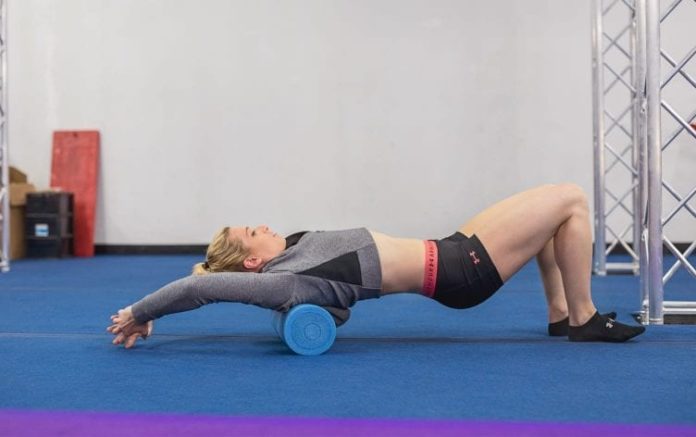
Foam rolling has become synonymous with athlete recovery — many pro runners and endurance athletes even travel with their foam rollers. The research largely backs up the efficacy of foam rolling: A review of foam rolling found it can improve mobility and range of motion, as well as decrease soreness post-workout — which can lead to speedier recovery after a tough run.
While we know foam rolling is a positive, we rarely talk about the best ways to do it. There are a few ways to foam roll that may cause more harm than good:
1
GOING TOO HARD, TOO SOON
If pressing your quad into a foam roller elicits a serious pain response because your muscles are so tight and tense, you’ll want to back off. Spending an hour pressing into it as hard as you can as you choke back a sob isn’t going to help you. “As endurance athletes, we tend to operate in that ‘no pain, no gain’ mindset in every realm, including therapy — but therapy should be the opposite of that,” says Suzanna Vogel, an orthopedic and sports massage therapist.
The Fix: Use a soft touch and ease off when it starts to feel painful. Start foam rolling for a few minutes then build up to those 30-minute sessions. (Vogel prefers getting into a routine with 5–10 minutes of rolling most days, versus a huge once-weekly session.)
2
NOT LOOKING BEYOND THE PAIN
“It helps to have a reason why you’re doing something like foam rolling,” says Vogel. “When it comes to foam rolling, what you’re really doing is breaking up these tiny adhesions between large muscle groups, like when you feel like your quad is ‘stuck’ to your IT band. It helps stretch the entire muscle, not just the two ends.”
The Fix: Vogel says you should spend time thinking about what feels good, what movements help and how you feel after a rolling session and in your next workout. Use foam rolling as a chance to gather information about what is really going on in your body.
3
ONLY ROLLING WHERE IT HURTS
Hitting that precise spot with a foam roller is likely only going to aggravate whatever’s going on. “Where it is, it ain’t,” says Vogel. “Where the pain is felt is always part of a bigger story.”
The Fix: Think about the areas around the painful spot: Tight hamstrings, for instance, can lead to knee pain for runners, so rolling your hamstrings might be the better place to start, instead of around your knees.
4
SPEEDING THROUGH
It’s common to cram foam rolling into a workout. But foam rolling at double speed doesn’t have the same benefits of slowly, methodically rolling. “You can get some benefit from a fast, light roll as a pre-workout warmup, but really, the best way to foam roll is taking time and doing it slowly and mindfully and paying attention to how your body is feeling (see point number 3),” says Vogel. “It’s not a workout, you shouldn’t work up a sweat by the end.”
The Fix: If you’re really pressed for time, target one or two spots, like hamstrings and calves, and do them slowly.
5
THINKING MORE IS MORE
It’s tempting to think that if doing something once a day is a positive thing, doing it several times a day will be even better. “More is not more — and I’ve seen people get addicted to foam rolling, not in a good way,” says Vogel. “You shouldn’t need more to feel good, you shouldn’t be bruised from foam rolling. It should definitely be something you do for a max of 30 minutes per day and that would be on the high side. It’s a tiny piece of your recovery program.”
The Fix: When it comes to foam rolling, once a day is plenty — and spending around 30 seconds on each muscle group is also enough.
6
NOT GETTING HELP
There are many aspects to foam rolling that aren’t intuitive. Having a plan for a foam rolling session and really knowing your body’s strengths and weaknesses makes for a better session. Just like lifting weights, it’s usually better to work with a personal trainer before going it alone.
The Fix: To make your foam rolling the most efficient it can be, consider making an appointment with a physical therapist to help you assess your current status and show you the best ways to use a foam roller on your own. That 30-minute session with an expert can make your foam rolling much more effective. “Foam rolling is just one part of the bigger picture of movement health, and it can help to have an expert work with you to come up with a plan that’s best suited for your needs,” Vogel adds.
7
STRESSING ABOUT IT
“As endurance athletes, we’re used to operating in fight-or-flight mode, and practices like foam rolling are meant to bring us down a few notches and put us into that rest, relax and recover place. That’s really helpful for full-body recovery,” says Vogel. Once again, more is not more. Our muscles are more receptive to recovery when they’re relaxed.
The Fix: Find ways to relax and embrace the pace of foam rolling for the best results. “Keep that [relaxed] mindset while foam rolling — put on some chill music, take deep breaths, create a relaxed vibe. That’s going to make it more effective,” says Vogel.







